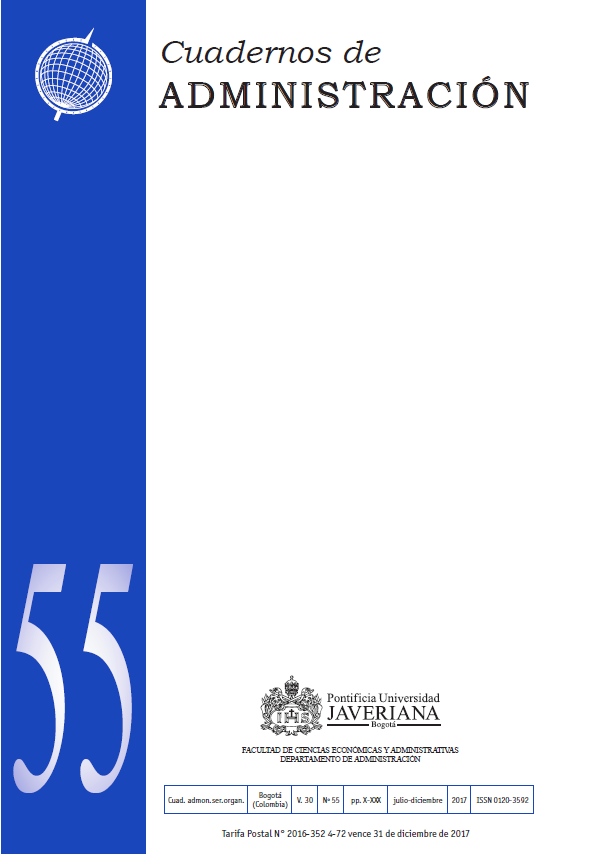Abstract
This article explores how the extension of the Pacific Alliance (PA) to Australia, Canada, New Zealand and Singapore would affect Colombia’s regional specialization. The indicator of Revealed Comparative Advantages (RCA) is calculated in terms of Contribution to the Commercial Balance (CCB) for Colombia in two exchange zones: the PA and the Pacific Alliance + 4 (PA + 4). Moving from the first zone to the second one, more products lose their comparative advantages with respect to the products that acquire advantages. Thus, PA + 4 would involve more threats than opportunities for regional specialization in Colombia, and would mainly affect food products, manufactured goods and transport machinery and equipment. Previously, the use of the RCA-CCB indicator is justified because of its better stationary trend in time, compared with other representative RCA indicators.
Balassa, B. (1965), Trade liberalization and ‘revealed’ comparative advantage, Manchester School, 33(2), 99–123.
De Saint-Vaulry, A. (2008). Base de données CHELEM-commerce international du CEPII. Document de travail CEPII, 9.
Hoen, A. R., & Oosterhaven, J. (2006). On the measurement of comparative advantage. Annals of Regional Science, 40(3), 677–691.
Lafay, G. (1987). Avantage comparatif et compétitivité. Économie Prospective Internationale (29), 39–52.
Lafay, G. (1992). The measurement of revealed comparative advantages. En M. G. Dagenais & P.-A. Muet (Eds), International Trade Modelling (pp. 209-234). London: Chapman & Hall.
This work is licensed under a Creative Commons Attribution-NonCommercial-ShareAlike 3.0 Unported License.


